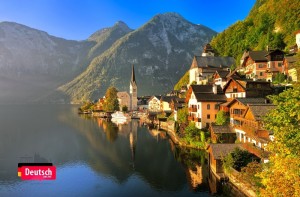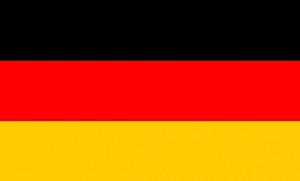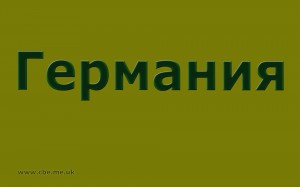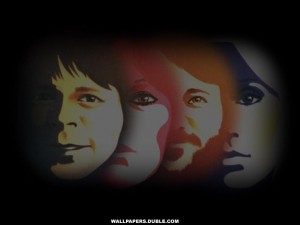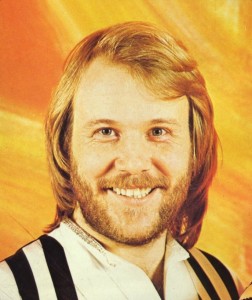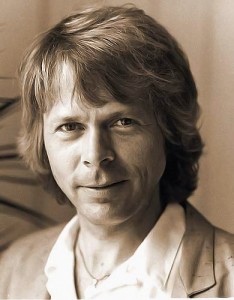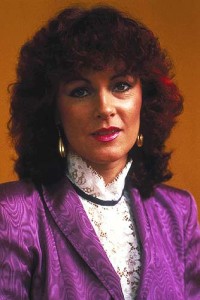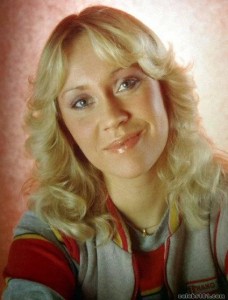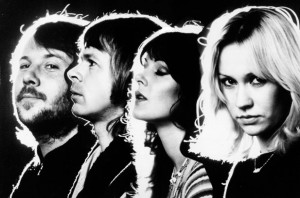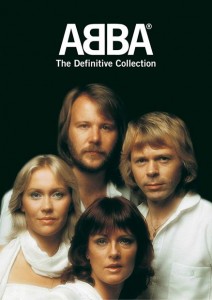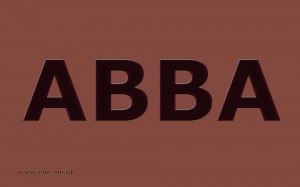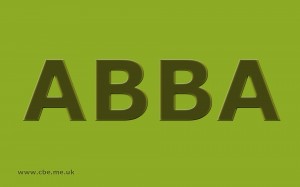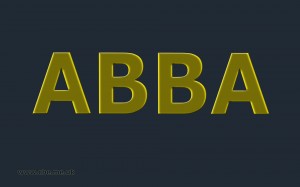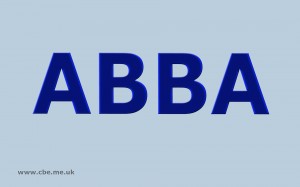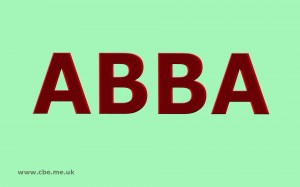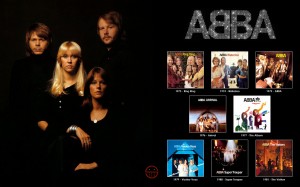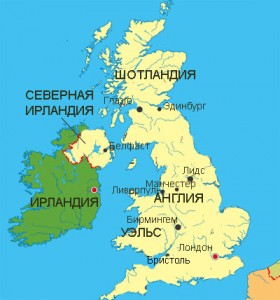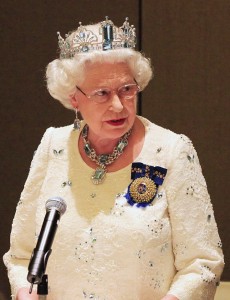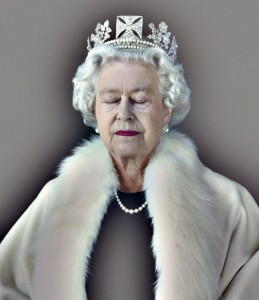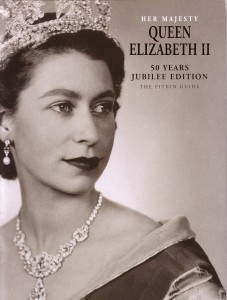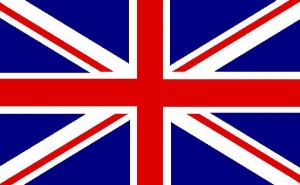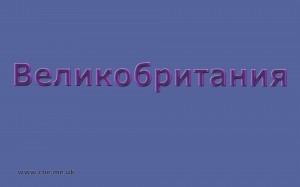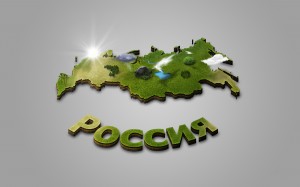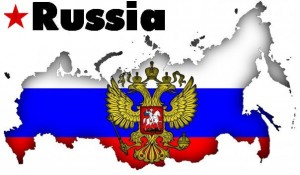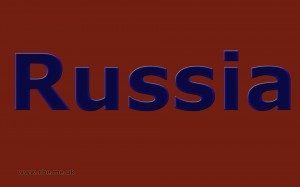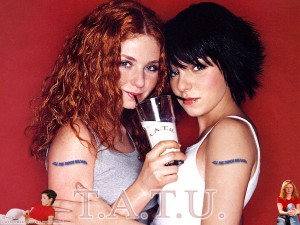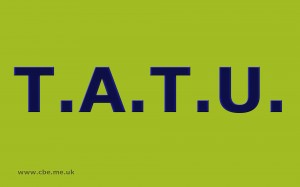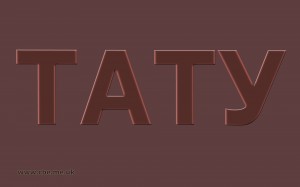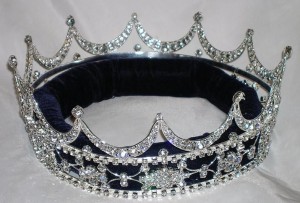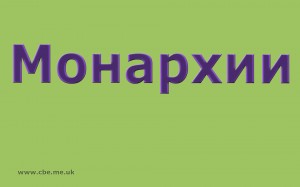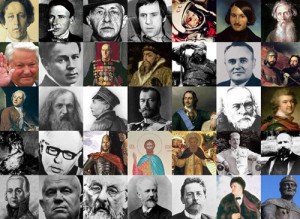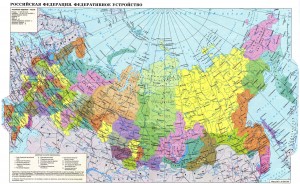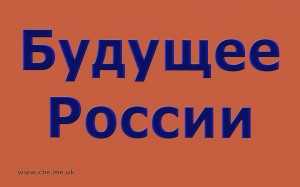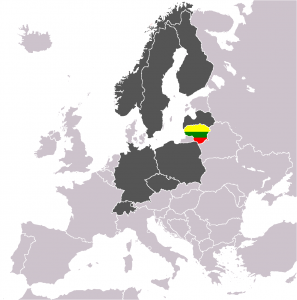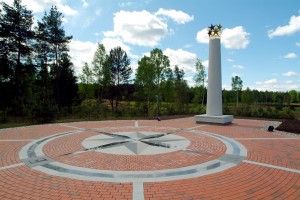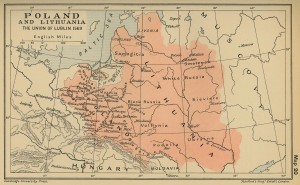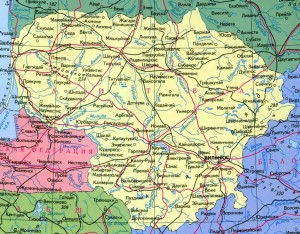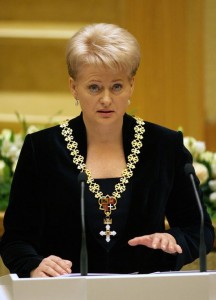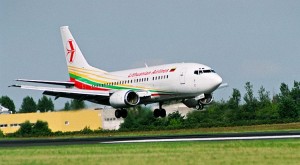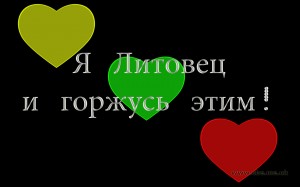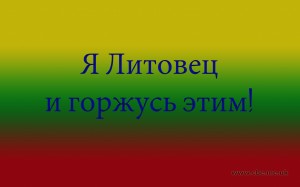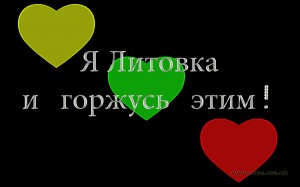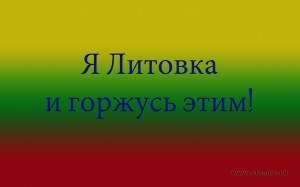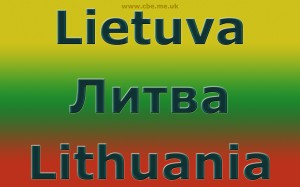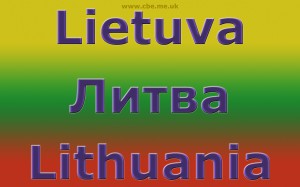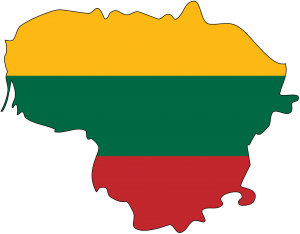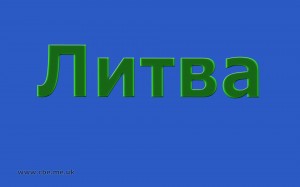Posts Tagged ‘обої’
38. Германия
Германия
~~~~~~~~~~~~~~~~~~~~~~~~~~~~~~~~~~~~~~~~~~~~~~~~~~~~~~~~~~~~~~~~~~~~~~~~~~~~~~~~~~~~
~~~~~~~~~~~~~~~~~~~~~~~~~~~~~~~~~~~~~~~~~~~~~~~~~~~~~~~~~~~~~~~~~~~~~~~~~~~~~~~~~~~~
Очень Красивая Страна
~~~~~~~~~~~~~~~~~~~~~~~~~~~~~~~~~~~~~~~~~~~~~~~~~~~~~~~~~~~~~~~~~~~~~~~~~~~~~~~~~~~~
~~~~~~~~~~~~~~~~~~~~~~~~~~~~~~~~~~~~~~~~~~~~~~~~~~~~~~~~~~~~~~~~~~~~~~~~~~~~~~~~~~~~
~~~~~~~~~~~~~~~~~~~~~~~~~~~~~~~~~~~~~~~~~~~~~~~~~~~~~~~~~~~~~~~~~~~~~~~~~~~~~~~~~~~~
~~~~~~~~~~~~~~~~~~~~~~~~~~~~~~~~~~~~~~~~~~~~~~~~~~~~~~~~~~~~~~~~~~~~~~~~~~~~~~~~~~~~
~~~~~~~~~~~~~~~~~~~~~~~~~~~~~~~~~~~~~~~~~~~~~~~~~~~~~~~~~~~~~~~~~~~~~~~~~~~~~~~~~~~~
~~~~~~~~~~~~~~~~~~~~~~~~~~~~~~~~~~~~~~~~~~~~~~~~~~~~~~~~~~~~~~~~~~~~~~~~~~~~~~~~~~~~
~~~~~~~~~~~~~~~~~~~~~~~~~~~~~~~~~~~~~~~~~~~~~~~~~~~~~~~~~~~~~~~~~~~~~~~~~~~~~~~~~~~~
~~~~~~~~~~~~~~~~~~~~~~~~~~~~~~~~~~~~~~~~~~~~~~~~~~~~~~~~~~~~~~~~~~~~~~~~~~~~~~~~~~~~
~~~~~~~~~~~~~~~~~~~~~~~~~~~~~~~~~~~~~~~~~~~~~~~~~~~~~~~~~~~~~~~~~~~~~~~~~~~~~~~~~~~~
~~~~~~~~~~~~~~~~~~~~~~~~~~~~~~~~~~~~~~~~~~~~~~~~~~~~~~~~~~~~~~~~~~~~~~~~~~~~~~~~~~~~
Немецкие сериалы
Cobra 11
Medicopter 117
~~~~~~~~~~~~~~~~~~~~~~~~~~~~~~~~~~~~~~~~~~~~~~~~~~~~~~~~~~~~~~~~~~~~~~~~~~~~~~~~~~~~
~~~~~~~~~~~~~~~~~~~~~~~~~~~~~~~~~~~~~~~~~~~~~~~~~~~~~~~~~~~~~~~~~~~~~~~~~~~~~~~~~~~~
~~~~~~~~~~~~~~~~~~~~~~~~~~~~~~~~~~~~~~~~~~~~~~~~~~~~~~~~~~~~~~~~~~~~~~~~~~~~~~~~~~~~
~~~~~~~~~~~~~~~~~~~~~~~~~~~~~~~~~~~~~~~~~~~~~~~~~~~~~~~~~~~~~~~~~~~~~~~~~~~~~~~~~~~~
~~~~~~~~~~~~~~~~~~~~~~~~~~~~~~~~~~~~~~~~~~~~~~~~~~~~~~~~~~~~~~~~~~~~~~~~~~~~~~~~~~~~
~~~~~~~~~~~~~~~~~~~~~~~~~~~~~~~~~~~~~~~~~~~~~~~~~~~~~~~~~~~~~~~~~~~~~~~~~~~~~~~~~~~~
43. ABBA
ABBA
~~~~~~~~~~~~~~~~~~~~~~~~~~~~~~~~~~~~~~~~~~~~~~~~~~~~~~~~~~~~~~~~~~~~~~~~~~~~~~~~~~~~
~~~~~~~~~~~~~~~~~~~~~~~~~~~~~~~~~~~~~~~~~~~~~~~~~~~~~~~~~~~~~~~~~~~~~~~~~~~~~~~~~~~~
Estimates of ABBA’s worldwide sales vary from 300 – 400 million, making them the second most successful band of all time, after The Beatles. They were the first mainland European act to become regulars on the British, American and Australian pop charts. This helped pave the way for many other European acts and established Sweden in the mainstream music industry.
~~~~~~~~~~~~~~~~~~~~~~~~~~~~~~~~~~~~~~~~~~~~~~~~~~~~~~~~~~~~~~~~~~~~~~~~~~~~~~~~~~~~
~~~~~~~~~~~~~~~~~~~~~~~~~~~~~~~~~~~~~~~~~~~~~~~~~~~~~~~~~~~~~~~~~~~~~~~~~~~~~~~~~~~~
Benny Andersson
Born: 16 12 1946
Birth place: Stockholm, Sweden
Both Benny Andersson’s father and grandfather were musicians and he was introduced to the accordion at a very young age. Benny had no patience for regular music lessons, preferring to pick up the instrument and play it. With obvious musical talent, he was able to easily do this with almost any instrument. By the age of 18, Benny’s favourite was the piano. He was with girlfriend Christina Gronvall at this time and she had fallen pregnant with the first of their two children when Benny was only 15-years-old.
After graduating from high school, Benny was invited to join The Hep Stars, a popular Swedish beat group, with a huge teenage girl fan-base. It was during this time that he met fellow young songwriter Bjorn Ulvaeus.
Benny remained with The Hep Stars for a number of successful years, until they disbanded in the late 1960s. He then joined forces with Bjorn and they released an LP together.
Shortly after that, Bjorn and Benny’s girlfriends, Agnetha Faltskog and Anni-Frid Lyngstad, joined the duo. They formed the touring folk act Festfolket, which was not much of a success. The foursome then transformed into the legendary ABBA, finding international stardom and remarkable success.
~~~~~~~~~~~~~~~~~~~~~~~~~~~~~~~~~~~~~~~~~~~~~~~~~~~~~~~~~~~~~~~~~~~~~~~~~~~~~~~~~~~~
~~~~~~~~~~~~~~~~~~~~~~~~~~~~~~~~~~~~~~~~~~~~~~~~~~~~~~~~~~~~~~~~~~~~~~~~~~~~~~~~~~~~
Bjorn Ulvaeus
Born: 25 04 1945
Birth place: Gothenburg, Sweden
His first foray into music was with the folk music act The Hootenanny Singers, who had strong jazz and blues influences. They made their television debut in a Swedish talent contest in 1963.
Bjorn joined up with Benny Andersson to write songs. One of these, ‘Isn’t it Easy to Say’, was a hit for The Hep Stars, and Bjorn sometimes guested with the band when they were on tour. At one point, it was suggested that The Hep Stars and The Hootenanny Singers merge to form one band, although this never happened. Stig Anderson, manager of The Hootenay Singers and founder of Polar Music, saw Benny and Bjorn’s collective potential and encouraged them to write more songs in order to release an album. They followed his advice, and Polar Music released their album ‘Lycka’ (‘Happiness’) in 1970.
Benny and Bjorn went on to release a further six singles. They also wrote a significant amount of music for the Polar label before joining with their girlfriends, Anni-Frid and Agnetha, to form ABBA, under the management of Stig Anderson.
~~~~~~~~~~~~~~~~~~~~~~~~~~~~~~~~~~~~~~~~~~~~~~~~~~~~~~~~~~~~~~~~~~~~~~~~~~~~~~~~~~~~
~~~~~~~~~~~~~~~~~~~~~~~~~~~~~~~~~~~~~~~~~~~~~~~~~~~~~~~~~~~~~~~~~~~~~~~~~~~~~~~~~~~~
Anni-Frid Lyngstad
Born: 15 11 1945
Birth place: Narvik, Norway
Anni-Frid’s mother, young Norwegian Synni Lyngstad, had an affair with German officer, Alfred Haase, during World War II. It was at the end of the war, when he returned to his country, that Synni discovered she was pregnant with his child. She gave birth to Anni-Frid (Frida, as she was later known) in the small Norwegian town of Narvik. To avoid being punished as a collaborator, Synni took her baby daughter to Torshalla, Sweden. When Frida was only two-years-old, her mother died and her grandmother, who always encouraged her to sing, raised her.
In 1957, at age 13, Frida made her stage debut at a Red Cross charity event. She met her boyfriend, Ragnar Fredriksson, when she was 15 and they had a son, Hans, when Frida was only 17. Shortly after Hans’s birth, Frida and Ragnar married and they had their second child, Lise-Lotte, a few years later.
Frida, a part-time cabaret singer, was fully committed to her burgeoning music career and was not prepared to give it up to be a full-time mother. This caused tensions in the marriage and eventually they divorced. Frida left her children in the care of their father, Ragnar, and her grandmother (“Mamma”), and went to live in Stockholm.
It was here that Frida met Benny Andersson, at the folkpark tour, and they were soon a couple. Benny invited her to sing backing vocals with Agnetha Faltskog, Bjorn’s girlfriend, on the ‘Lycka’ album. Both women were uncredited for this work. Soon after this, the foursome became ABBA.
Benny produced Frida’s only solo LP during the ABBA years, ‘Frida Ensam’ (1975), which included an earlier, Swedish hit single version of ‘Fernando’.
~~~~~~~~~~~~~~~~~~~~~~~~~~~~~~~~~~~~~~~~~~~~~~~~~~~~~~~~~~~~~~~~~~~~~~~~~~~~~~~~~~~~
~~~~~~~~~~~~~~~~~~~~~~~~~~~~~~~~~~~~~~~~~~~~~~~~~~~~~~~~~~~~~~~~~~~~~~~~~~~~~~~~~~~~
Agnetha Faltskog
Born: 05 04 1950
Birth place: Jongoping, Sweden
Agnetha, the youngest member of the group, was a pop-phenomenon in her own right. She wrote and performed Swedish hits during her teens and played the role of Mary Magdalene in the Swedish production of ‘Jesus Christ Superstar’. She was noted as an accomplished composer, although she saw it as a lot of hard work.
Agnetha recorded covers of hit songs and toured the Swedish ‘folkparks’ live circuit. It was during one of The Hootenay Singers performances at a folkparks event, that Agnetha met Bjorn Ulvaeus. They soon fell in love and were married in 1971. It was the Swedish celebrity wedding of the year and was surrounded by much publicity.
In the early 1970s, Bjorn and Agnetha, although married, continued to pursue their separate musical careers. The foursome was gaining stronger bonds and was about to explode onto the international pop circuit as supergroup ABBA.
~~~~~~~~~~~~~~~~~~~~~~~~~~~~~~~~~~~~~~~~~~~~~~~~~~~~~~~~~~~~~~~~~~~~~~~~~~~~~~~~~~~~
~~~~~~~~~~~~~~~~~~~~~~~~~~~~~~~~~~~~~~~~~~~~~~~~~~~~~~~~~~~~~~~~~~~~~~~~~~~~~~~~~~~~
ABBA
1972 – 1983
The Swedish pop music group formed in Stockholm in 1972. The band name was comprised of the first letters of the member’s names: Agnetha, Bjorn, Benny and Anni-Frid (better known as Frida).
Stig Anderson, manager of The Hootenay Singers and founder of Polar Music, had encouraged Bjorn and Benny to write a song for the 1972 Eurovision Song Contest. Their contribution was ‘Say It with a Song’, which was performed by Lena Anderson. It won third prize in the selection rounds and was a hit in several countries. Stig was onto something here.
A single they wrote, called ‘People Need Love’, featured backing vocals by Agnetha and Frida and brought them some success in Japan. Stig released it as single ‘Bjorn & Benny, Agnetha & Anni-Frid’. It reached number 17 in the Swedish charts. The seeds of ABBA had been sown.
A year later, the group entered the 1973 Eurovision Song Contest, with the song ‘Ring Ring’, once again coming third. In the studio, producer Michael B. Tretow, had been experimenting with new production techniques, called ‘wall of sound’, which was to become the whole new ABBA sound. The proto-group, still clumsily called ‘Bjorn & Benny, Agnetha & Anni-Frid’ released the album ‘Ring Ring’ (1973), which did well, with the title single a hit in many parts of Europe.
Stig was hungry to break into the UK and US markets. He was becoming tired of the lengthy band name, so using an acronym of the first letters of their names, started referring to the band as ABBA. It was actually a bit of a joke, as at the time, there was a fish-canning company in Sweden of the same name. Stig decided though, that as the fish-canners were unknown outside of Sweden, they would keep the short and far catchier name of ABBA. The band had to later negotiate with the fish-canners for the right to use the name.
On 6 April 1974, the group finally won the Eurovision Song Contest in Brighton, hands down, with ‘Waterloo’. It was a glam-rock inspired song, once again produced by Michael B. Tretow, and put them firmly on the musical map. Britain was now fully aware of the distinctive ABBA group and ‘Waterloo’ became ABBA’s first UK number one. It reached number six in the US.
It was with the release of their second album ‘ABBA’ (1975) with the single ‘SOS’, a top ten hit, that they had truly made their presence felt in the UK. They were no longer considered ‘one-hit-wonders’. So pleased were they with their success, that ABBA released a ‘Greatest Hits’ (1975) album, even although they had only had five Top 40 hits in the UK and US by that time. In January 1976, ‘Mamma Mia’ made number one in the UK.
From 1976 onwards, the first ‘B’ in their logo version of the band name, was reversed on all their promotional material. The 1976 album ‘Arrival’ not only showed a new height of achievement in terms of song writing and studio work, but produced three huge hits, ‘Money, Money, Money’, ‘Knowing Me, Knowing You’, and ‘Dancing Queen’ (the latter arguably being both their most definitive and most enduring song).
Other European pop groups, keen to share in the limelight, quickly copied ABBA’s sound, as well as their two-boy/two-girl format. These groups include Brotherhood of Man and Bucks Fizz, who both won the Eurovision Song Contest, in 1976 and 1981 respectively, perhaps validating this formula.
‘The Album’ (1977) was released to coincide with ‘ABBA: The Movie’ (1977), a feature film made of their Australian tour. Hits from this album were ‘Take a Chance on Me’, “’The Name of the Game’, and ‘Thank You for the Music’.
By 1978, ABBA could only be referred to as a megagroup. Their trendy label, Polar Music Studio, converted an old cinema in Stockholm into their new state-of-the-art premises. Other well-known bands, such as Led Zeppelin, for their recording of ‘In Through the Out Door’, used the studio.
ABBA was moving into the arena of disco, which had exploded in 1977, with the Bee Gees ‘Saturday Night Fever’. ABBA released the single ‘Summer Night City’ (1978) and after that, the album ‘Voulez-Vous’ (1979), both with a distinctly disco sound. The reaction to this album from the UK and Europe was not as strongly favourable as that of the US. However, singles from the album: ‘Does Your Mother Know’, ‘Chiquitita’, ‘Voulez-Vous’, and ‘I Have a Dream’ all found their way onto the charts.
In January 1979, the group performed at the Music for UNICEF Concert, donating all royalties for the song to the children’s charity, in perpetuity. Their best-known disco hit ‘Gimme! Gimme! Gimme! (A Man After Midnight)’ was featured as a brand new track on the ‘Greatest Hits Vol. 2’ (1979) album. Also that year, ABBA toured the US and Canada, playing to massive audiences.
Moving into the 1980s, ABBA’s style shifted to more personal lyrics and more pronounced synthesisers. Releasing the single ‘The Winner Takes it All’ in January 1980 sufficiently piqued public interest in the upcoming album for ‘Super Trouper’ (1980) to set the record for the most pre-orders ever received for a UK album. The single was allegedly about Agnetha and Bjorn’s marriage, which was going through a rough patch at that time. Another hit single from this album was ‘Lay Your Love on Me’.
ABBA released their final studio album ‘The Visitors’ (1981). Whilst this album showed a newfound depth and maturity, it was the start of their commercial decline. The group’s last hit single ‘One of Us’ was a global hit in December 1981.
The group was starting to show signs of personal distress, with both the marriages by now ended in divorce. They came together in the summer of 1982 to record a new album, but settled instead for a double compilation album of past hits, with two new songs thrown in. ‘The Singles: The First Ten Years’ (1982) contained the new tracks ‘Under Attack’ and ‘The Day Before You Came’, which was the last song ABBA ever recorded together.
They had recorded two other songs earlier in 1982, ‘I Am the City’ and ‘Just Like That’. Of the two, only the former was ever released, on the compilation album ‘More ABBA Gold: More ABBA Hits’ (1993). Benny and Bjorn still refuse to release the latter single, much to the frustration of fans.
ABBA disbanded at the end of 1983, collectively deciding to take a break and pursue their individual projects.
~~~~~~~~~~~~~~~~~~~~~~~~~~~~~~~~~~~~~~~~~~~~~~~~~~~~~~~~~~~~~~~~~~~~~~~~~~~~~~~~~~~~
~~~~~~~~~~~~~~~~~~~~~~~~~~~~~~~~~~~~~~~~~~~~~~~~~~~~~~~~~~~~~~~~~~~~~~~~~~~~~~~~~~~~
Post ABBA Years
Agnetha and Frida
Agnetha and Frida both went on to work, with some success, on their solo albums. Frida released ‘Something’s Going On’ (1982), produced by Phil Collins, with hit single ‘I Know There’s Something Going On’. Agnetha followed with her album ‘Wrap Your Arms Around Me’ (1983), which included hit single ‘The Heat is On’, and sold 1.2 million copies worldwide.
Frida’s second solo album ‘Shine’ (1984), produced by Steve Lillywhite, received a lacklustre reception and she decided to retire. In contrast, Agnetha’s second post-ABBA solo album ‘Eyes of a Woman’ (1985) did rather well in Europe and reached number two in the Swedish charts. She released ‘I Stand Alone’ (1987) and then withdrew from public life, refusing to give any more interviews.
Almost a decade later, Agnetha released her autobiography ‘As I Am’, as well as a compilation of her solo hits. ‘My Colouring Book’ (2004) was an album of cover songs, going triple-platinum in Sweden, gold in Finland and silver in Great Britain.
Frida came out of her twelve-year retirement to release her last album to date, the Swedish ‘Djupa Andetag’ (1996), which reached number one in Sweden but was unknown elsewhere. She recorded the song ‘The Sun Will Shine Again’ (2004) with Jon Lord, former Deep Purple band member, for his latest album, and made some rare television appearances in Germany.
~~~~~~~~~~~~~~~~~~~~~~~~~~~~~~
Bjorn and Benny
Bjorn and Benny wrote the music for West End show ‘Chess’ (1984), in collaboration with lyricist Tim Rice. The show ran successfully in London for three years but closed after only three weeks on Broadway. This was due to the fact that the storyline, the lyrics and the song order had all been changed for the US show.
To follow, Bjorn and Benny wrote ‘Kristina fran Duvemala’ (1995), directed for stage by Lars Rudolfsson and based on a Swedish novel by Vilhelm Moberg. ‘Mamma Mia!’, the musical concentrated around ABBA’s songs, which Benny and Bjorn co-wrote and co-produced, premiered in London’s West End in 1999 and is still running. The production has spread to many other countries and enjoyed more than 1 500 performances on Broadway.
Bjorn and Benny received recognition for their song writing in the form of an Ivor Novello Award in 2001. 2003 saw the release of a Swedish-language version of their first musical ‘Chess Pa Svenska’.
~~~~~~~~~~~~~~~~~~~~~~~~~~~~~~
All Together
The group’s popularity didn’t seem to wane after they broke up. ABBA continued to release compilation albums of their greatest hits, from ‘Thank You For The Music’ (1983) to their most recent, ‘The Complete Studio Recordings’ (2005).
On 6 April 2004, Bjorn, Benny and Frida travelled to London for the 30th Anniversary of their Eurovision Song Contest win in 1974. They appeared on stage after the 5th anniversary performance of ‘Mamma Mia!’.
In February 2005, for the first time since their disbandment in 1983, all four former ABBA members appeared in public together, at the gala of ‘Mamma Mia!’ in Stockholm. In October 2005, during the 50th anniversary of the Eurovision Song Contest held in Copenhagen, ‘Waterloo’ was voted best Eurovision song in the history of the contest.
ABBA’s use of videos, with bright costumes and early video image effects, to accompany their bigger hits, is often viewed as being some of the first examples of the genre. Promotional videos were still not an industry standard in the early- to mid-1970s, despite the fact that The Beatles and the Rolling Stones had shot occasional video clips prior to that. Directing ABBA’s videos was the talented Lasse Hallstrom, who went on to direct films including ‘My Life as a Dog’, ‘The Cider House Rules’, and ‘Chocolat’. The videos were a clever marketing tool, enabling quick and wide exposure of upcoming music releases or tour details, without the need for constant personal appearances. Some of these early ABBA music videos have come to be viewed as classics.
~~~~~~~~~~~~~~~~~~~~~~~~~~~~~~~~~~~~~~~~~~~~~~~~~~~~~~~~~~~~~~~~~~~~~~~~~~~~~~~~~~~~
~~~~~~~~~~~~~~~~~~~~~~~~~~~~~~~~~~~~~~~~~~~~~~~~~~~~~~~~~~~~~~~~~~~~~~~~~~~~~~~~~~~~
~~~~~~~~~~~~~~~~~~~~~~~~~~~~~~~~~~~~~~~~~~~~~~~~~~~~~~~~~~~~~~~~~~~~~~~~~~~~~~~~~~~~
~~~~~~~~~~~~~~~~~~~~~~~~~~~~~~~~~~~~~~~~~~~~~~~~~~~~~~~~~~~~~~~~~~~~~~~~~~~~~~~~~~~~
~~~~~~~~~~~~~~~~~~~~~~~~~~~~~~~~~~~~~~~~~~~~~~~~~~~~~~~~~~~~~~~~~~~~~~~~~~~~~~~~~~~~
~~~~~~~~~~~~~~~~~~~~~~~~~~~~~~~~~~~~~~~~~~~~~~~~~~~~~~~~~~~~~~~~~~~~~~~~~~~~~~~~~~~~
~~~~~~~~~~~~~~~~~~~~~~~~~~~~~~~~~~~~~~~~~~~~~~~~~~~~~~~~~~~~~~~~~~~~~~~~~~~~~~~~~~~~
~~~~~~~~~~~~~~~~~~~~~~~~~~~~~~~~~~~~~~~~~~~~~~~~~~~~~~~~~~~~~~~~~~~~~~~~~~~~~~~~~~~~
33. Великобритания
Великобритания
~~~~~~~~~~~~~~~~~~~~~~~~~~~~~~~~~~~~~~~~~~~~~~~~~~~~~~~~~~~~~~~~~~~~~~~~~~~~~~~~~~~~
~~~~~~~~~~~~~~~~~~~~~~~~~~~~~~~~~~~~~~~~~~~~~~~~~~~~~~~~~~~~~~~~~~~~~~~~~~~~~~~~~~~~
Столица – г. Лондон.
Площадь: 242514 км².
Население: 62 млн.
Глава государства – королева Елизавета II.
~~~~~~~~~~~~~~~~~~~~~~~~~~~~~~~~~~~~~~~~~~~~~~~~~~~~~~~~~~~~~~~~~~~~~~~~~~~~~~~~~~~~
~~~~~~~~~~~~~~~~~~~~~~~~~~~~~~~~~~~~~~~~~~~~~~~~~~~~~~~~~~~~~~~~~~~~~~~~~~~~~~~~~~~~
2. Регионы Великобритании 1. Uk.Ru |Англия,Великобритания,Английская история|язык, работа, учеба, English topics~~~~~~~~~~~~~~~~~~~~~~~~~~~~~~~~~~~~~~~~~~~~~~~~~~~~~~~~~~~~~~~~~~~~~~~~~~~~~~~~~~~~
~~~~~~~~~~~~~~~~~~~~~~~~~~~~~~~~~~~~~~~~~~~~~~~~~~~~~~~~~~~~~~~~~~~~~~~~~~~~~~~~~~~~
Ее Величество Королева Елизавета II (2011)
~~~~~~~~~~~~~~~~~~~~~~~~~~~~~~
~~~~~~~~~~~~~~~~~~~~~~~~~~~~~~~~~~~~~~~~~~~~~~~~~~~~~~~~~~~~~~~~~~~~~~~~~~~~~~~~~~~~
~~~~~~~~~~~~~~~~~~~~~~~~~~~~~~~~~~~~~~~~~~~~~~~~~~~~~~~~~~~~~~~~~~~~~~~~~~~~~~~~~~~~
HM Queen Elizabeth II – Diamond Age (2012)
~~~~~~~~~~~~~~~~~~~~~~~~~~~~~~~~~~~~~~~~~~~~~~~~~~~~~~~~~~~~~~~~~~~~~~~~~~~~~~~~~~~~
~~~~~~~~~~~~~~~~~~~~~~~~~~~~~~~~~~~~~~~~~~~~~~~~~~~~~~~~~~~~~~~~~~~~~~~~~~~~~~~~~~~~
Кто знает английский – должно быть интересно. Речь идет о всей Великобритании.
~~~~~~~~~~~~~~~~~~~~~~~~~~~~~~~~~~~~~~~~~~~~~~~~~~~~~~~~~~~~~~~~~~~~~~~~~~~~~~~~~~~~
~~~~~~~~~~~~~~~~~~~~~~~~~~~~~~~~~~~~~~~~~~~~~~~~~~~~~~~~~~~~~~~~~~~~~~~~~~~~~~~~~~~~
Коронация Принцессы Елизаветы (1953)
~~~~~~~~~~~~~~~~~~~~~~~~~~~~~~~~~~~~~~~~~~~~~~~~~~~~~~~~~~~~~~~~~~~~~~~~~~~~~~~~~~~~
~~~~~~~~~~~~~~~~~~~~~~~~~~~~~~~~~~~~~~~~~~~~~~~~~~~~~~~~~~~~~~~~~~~~~~~~~~~~~~~~~~~~
Королевская свадьба (2011)
~~~~~~~~~~~~~~~~~~~~~~~~~~~~~~~~~~~~~~~~~~~~~~~~~~~~~~~~~~~~~~~~~~~~~~~~~~~~~~~~~~~~
~~~~~~~~~~~~~~~~~~~~~~~~~~~~~~~~~~~~~~~~~~~~~~~~~~~~~~~~~~~~~~~~~~~~~~~~~~~~~~~~~~~~
London Eye, UK 04-09-2010
~~~~~~~~~~~~~~~~~~~~~~~~~~~~~~~~~~~~~~~~~~~~~~~~~~~~~~~~~~~~~~~~~~~~~~~~~~~~~~~~~~~~
~~~~~~~~~~~~~~~~~~~~~~~~~~~~~~~~~~~~~~~~~~~~~~~~~~~~~~~~~~~~~~~~~~~~~~~~~~~~~~~~~~~~
Один эмигрант из Литвы
~~~~~~~~~~~~~~~~~~~~~~~~~~~~~~~~~~~~~~~~~~~~~~~~~~~~~~~~~~~~~~~~~~~~~~~~~~~~~~~~~~~~
~~~~~~~~~~~~~~~~~~~~~~~~~~~~~~~~~~~~~~~~~~~~~~~~~~~~~~~~~~~~~~~~~~~~~~~~~~~~~~~~~~~~
~~~~~~~~~~~~~~~~~~~~~~~~~~~~~~~~~~~~~~~~~~~~~~~~~~~~~~~~~~~~~~~~~~~~~~~~~~~~~~~~~~~~
~~~~~~~~~~~~~~~~~~~~~~~~~~~~~~~~~~~~~~~~~~~~~~~~~~~~~~~~~~~~~~~~~~~~~~~~~~~~~~~~~~~~
~~~~~~~~~~~~~~~~~~~~~~~~~~~~~~~~~~~~~~~~~~~~~~~~~~~~~~~~~~~~~~~~~~~~~~~~~~~~~~~~~~~~
~~~~~~~~~~~~~~~~~~~~~~~~~~~~~~~~~~~~~~~~~~~~~~~~~~~~~~~~~~~~~~~~~~~~~~~~~~~~~~~~~~~~
~~~~~~~~~~~~~~~~~~~~~~~~~~~~~~~~~~~~~~~~~~~~~~~~~~~~~~~~~~~~~~~~~~~~~~~~~~~~~~~~~~~~
~~~~~~~~~~~~~~~~~~~~~~~~~~~~~~~~~~~~~~~~~~~~~~~~~~~~~~~~~~~~~~~~~~~~~~~~~~~~~~~~~~~~
~~~~~~~~~~~~~~~~~~~~~~~~~~~~~~~~~~~~~~~~~~~~~~~~~~~~~~~~~~~~~~~~~~~~~~~~~~~~~~~~~~~~
~~~~~~~~~~~~~~~~~~~~~~~~~~~~~~~~~~~~~~~~~~~~~~~~~~~~~~~~~~~~~~~~~~~~~~~~~~~~~~~~~~~~
~~~~~~~~~~~~~~~~~~~~~~~~~~~~~~~~~~~~~~~~~~~~~~~~~~~~~~~~~~~~~~~~~~~~~~~~~~~~~~~~~~~~
~~~~~~~~~~~~~~~~~~~~~~~~~~~~~~~~~~~~~~~~~~~~~~~~~~~~~~~~~~~~~~~~~~~~~~~~~~~~~~~~~~~~
~~~~~~~~~~~~~~~~~~~~~~~~~~~~~~~~~~~~~~~~~~~~~~~~~~~~~~~~~~~~~~~~~~~~~~~~~~~~~~~~~~~~
~~~~~~~~~~~~~~~~~~~~~~~~~~~~~~~~~~~~~~~~~~~~~~~~~~~~~~~~~~~~~~~~~~~~~~~~~~~~~~~~~~~~
40. Russia
Russian Federation
~~~~~~~~~~~~~~~~~~~~~~~~~~~~~~~~~~~~~~~~~~~~~~~~~~~~~~~~~~~~~~~~~~~~~~~~~~~~~~~~~~~~
~~~~~~~~~~~~~~~~~~~~~~~~~~~~~~~~~~~~~~~~~~~~~~~~~~~~~~~~~~~~~~~~~~~~~~~~~~~~~~~~~~~~
Area: 17 million sq. km. (6.5 million sq. mi.); about 1.8 times the size of the United States.
Cities: Capital–Moscow (pop. 10.4 million). Other cities–St. Petersburg (4.6 million), Novosibirsk (1.4 million), Nizhniy Novgorod (1.3 million).
Terrain: Broad plain with low hills west of Urals; vast coniferous forest and tundra in Siberia; uplands and mountains (Caucasus range) along southern borders.
Climate: Northern continental.
Nationality: Noun and adjective–Russian(s).
Population (August 2011): 142.9 million.
Annual population growth rate (2011 est.): -0.07%.
Ethnic groups (2002 census): Russian 79.8%, Tatar 3.8%, Ukrainian 2%, Bashkir 1.2%, Chuvash 1.1%, other 12.1%.
Religion: Russian Orthodox, Islam, Judaism, Roman Catholicism, Protestant, Buddhist, other.
Language: Russian (official); more than 140 other languages and dialects.
Education (total pop.): Literacy–99.4%.
Health: Life expectancy (2011 est.)–63.03 years men, 74.87 years women.
Work force (75.49 million, 2010 est.): Services–58.1%, industry–31.9%, agriculture–10%.
Government
Type: Federation.
Independence: August 24, 1991.
Constitution: December 12, 1993.
Branches: Executive–president, prime minister (chairman of the government). Legislative–Federal Assembly (Federation Council, State Duma). Judicial–Constitutional Court, Supreme Court, Supreme Court of Arbitration, Office of Procurator General.
Political parties: After a shakeup in late 2008 dissolved and combined several parties, seven registered parties remained: United Russia, the Communist Party (KPRF), the Liberal Democratic Party (LDPR), Just Russia, Yabloko, Patriots of Russia, and the new Right Cause party. Yabloko, which favors liberal reforms, and Patriots of Russia failed to clear the 7% threshold in 2007 to enter the Duma. The next round of Duma elections will be held on December 4, 2011.
Subdivisions: 83 federal subjects (members of the Federation), including 21 republics, 9 krays, 46 oblasts, 2 federal cities, 1 autonomous oblast, and 4 autonomous okrugs.
Suffrage: Universal at 18 years.
Economy
GDP (2010): $1.477 trillion.
Growth rate (2011): 4%.
Natural resources: Petroleum, natural gas, timber, furs, precious and nonferrous metals.
Agriculture: Products–Grain, sugar beets, sunflower seeds, meat, dairy products.
Industry: Types–Complete range of manufactures: automobiles, trucks, trains, agricultural equipment, advanced aircraft, aerospace, machine and equipment products; mining and extractive industry; medical and scientific instruments; construction equipment.
Trade (2010): Exports–$376.7 billion: petroleum and petroleum products, natural gas, woods and wood products, metals, chemicals. Major markets–EU, CIS, China, Japan.Imports–$191.8 billion: machinery and equipment, chemicals, consumer goods, medicines, meat, sugar, semi-finished metal products. Major partners–EU, CIS, Japan, China, U.S. U.S. exports–$6.0 billion. Principal U.S. exports to Russia (2010)–oil/gas equipment, meat, motor vehicles and parts, aircraft, electrical machinery, automatic data processing machines and parts, medical equipment, plastics, cosmetics, and chemicals.U.S. imports–$25.7 billion. Principal U.S. imports from Russia (2010)–oil, chemicals (including fertilizer), radioactive materials, iron/steel, precious stones, nickel, aluminum, fish and crustaceans, alcoholic beverages, and base metals.
PEOPLE
Russia’s 142.9 million citizens descend from more than 100 ethnic groups. Russian is the official language of Russia and is one of the six official languages of the United Nations. Russian is also the language of such giants of world literature as Pushkin, Tolstoy, Dostoevsky, Chekhov, Pasternak, and Solzhenitsyn.
Russia’s educational system has produced nearly 100% literacy. About 8.1 million students attended Russia’s 1,108 institutions of higher education in 2008, but continued reform is critical to producing students with skills to adapt to a market economy. Because great emphasis is placed on science and technology in education, Russian mathematical, scientific, and space and aviation research is still generally of a high order. The number of doctors in relation to the population is high by American standards, although medical care in Russia, even in major cities, is generally far below Western standards. The unraveling of the Soviet state in its last decades and the physical and psychological traumas of transition during the 1990s resulted in a steady decline in the health of the Russian people. Currently Russia faces a demographic crisis as births lag far behind deaths. While its population is aging, the high number of deaths of working-age males due to cardiovascular disease is a major cause of Russia’s demographic woes. A rapid increase in HIV/AIDS infections and tuberculosis, added to rising deaths from cancer, compounds the problem. In 2011, life expectancy at birth was estimated at 63.03 years for men and 74.87 years for women. The large annual excess of deaths over births, if unabated, could cut Russia’s population by 30% over the next 50 years, though inward migration could change this picture. At the end of 2010, there were 60 million Internet users in Russia, with the number growing by 15% a year. Industry watchers forecast that Russia will be Europe’s largest Internet market within the next 2 years.
The Russian labor force, amounting to nearly 76 million workers in 2010, is undergoing tremendous changes. Although well educated and skilled, it is largely mismatched to the rapidly changing needs of the Russian economy. Official unemployment dropped to its lowest rate of 5.4% in May 2008, and labor shortages appeared in some high-skilled job markets. The economic crisis that began in late 2008, however, quickly reversed this trend and the ranks of unemployed swelled to an International Labor Organization (ILO)-estimated 8.2% in 2009; 1.8 million Russians lost their jobs in the first quarter of 2009 alone. By the end of 2010, the Russian economy showed signs of recovery, with the unemployment rate falling to 7.4% by the end of the second quarter, according to the Russian Government statistics agency, Rosstat. Following the 1991 collapse of the Soviet Union and the economic dislocation it engendered, the standard of living fell dramatically. Real disposable incomes then doubled between 1999 and 2009, and experts estimate that the middle class constitutes approximately one-fourth of the population. The economic crisis, however, interrupted this trend, as real disposable incomes grew by only 1.9% in 2009 and wages fell by 2.8% during the same period. The stock of wage arrears, which peaked during the crisis at almost 9 billion rubles, had fallen by almost half by February 2010. Government anti-crisis measures to bolster wages, pensions, and other benefits helped reduce the poverty rate in 2009 to an estimated 14%, bringing the number of people living below the subsistence minimum (equivalent to about $169 per month) to below 20 million. The official poverty rate was estimated as 13.1% by the World Bank at the end of 2010. According to Russian statistics, the poverty level increased to 14.9% of the population in the first half of 2011 because of an increase in the official poverty threshold and because average real income fell slightly in 2011.
Moscow is Russia’s capital and largest city. Moscow is also increasingly important as an economic and business center; it has become Russia’s principal magnet for foreign investment and business presence. Its cultural tradition is rich, and there are many museums devoted to art, literature, music, dance, history, and science, as well as hundreds of churches and dozens of notable cathedrals.
The second-largest city in Russia is St. Petersburg, which was established by Peter the Great in 1703 to be the capital of the Russian Empire as part of his Western-looking reforms. The city was called Petrograd during World War I and Leningrad after 1924. In 1991, as the result of a city referendum, it was renamed St. Petersburg. Under the tsars, the city was Russia’s cultural, intellectual, commercial, financial, and industrial center. After Lenin moved the capital back to Moscow in 1918, the city’s political significance declined, but it remained a cultural, scientific, and military-industrial center. The Hermitage, formerly the Winter Palace of the tsars, is one of the world’s great fine arts museums.
Russia has an area of about 17 million square kilometers (6.5 million sq. mi.); in geographic terms, this makes Russia the largest country in the world by more than 2.5 million square miles. But with a population density of about 22 persons per square mile (9 per sq. km.), it is sparsely populated, and most of its residents live in urban areas.
~~~~~~~~~~~~~~~~~~~~~~~~~~~~~~~~~~~~~~~~~~~~~~~~~~~~~~~~~~~~~~~~~~~~~~~~~~~~~~~~~~~~
~~~~~~~~~~~~~~~~~~~~~~~~~~~~~~~~~~~~~~~~~~~~~~~~~~~~~~~~~~~~~~~~~~~~~~~~~~~~~~~~~~~~
~~~~~~~~~~~~~~~~~~~~~~~~~~~~~~~~~~~~~~~~~~~~~~~~~~~~~~~~~~~~~~~~~~~~~~~~~~~~~~~~~~~~
~~~~~~~~~~~~~~~~~~~~~~~~~~~~~~~~~~~~~~~~~~~~~~~~~~~~~~~~~~~~~~~~~~~~~~~~~~~~~~~~~~~~
3. Real Russia 2. Russian Federation 1. Russia~~~~~~~~~~~~~~~~~~~~~~~~~~~~~~~~~~~~~~~~~~~~~~~~~~~~~~~~~~~~~~~~~~~~~~~~~~~~~~~~~~~~
~~~~~~~~~~~~~~~~~~~~~~~~~~~~~~~~~~~~~~~~~~~~~~~~~~~~~~~~~~~~~~~~~~~~~~~~~~~~~~~~~~~~
~~~~~~~~~~~~~~~~~~~~~~~~~~~~~~~~~~~~~~~~~~~~~~~~~~~~~~~~~~~~~~~~~~~~~~~~~~~~~~~~~~~~
~~~~~~~~~~~~~~~~~~~~~~~~~~~~~~~~~~~~~~~~~~~~~~~~~~~~~~~~~~~~~~~~~~~~~~~~~~~~~~~~~~~~
2012
~~~~~~~~~~~~~~~~~~~~~~~~~~~~~~~~~~~~~~~~~~~~~~~~~~~~~~~~~~~~~~~~~~~~~~~~~~~~~~~~~~~~
~~~~~~~~~~~~~~~~~~~~~~~~~~~~~~~~~~~~~~~~~~~~~~~~~~~~~~~~~~~~~~~~~~~~~~~~~~~~~~~~~~~~
~~~~~~~~~~~~~~~~~~~~~~~~~~~~~~~~~~~~~~~~~~~~~~~~~~~~~~~~~~~~~~~~~~~~~~~~~~~~~~~~~~~~
~~~~~~~~~~~~~~~~~~~~~~~~~~~~~~~~~~~~~~~~~~~~~~~~~~~~~~~~~~~~~~~~~~~~~~~~~~~~~~~~~~~~
~~~~~~~~~~~~~~~~~~~~~~~~~~~~~~~~~~~~~~~~~~~~~~~~~~~~~~~~~~~~~~~~~~~~~~~~~~~~~~~~~~~~
~~~~~~~~~~~~~~~~~~~~~~~~~~~~~~~~~~~~~~~~~~~~~~~~~~~~~~~~~~~~~~~~~~~~~~~~~~~~~~~~~~~~
~~~~~~~~~~~~~~~~~~~~~~~~~~~~~~~~~~~~~~~~~~~~~~~~~~~~~~~~~~~~~~~~~~~~~~~~~~~~~~~~~~~~
~~~~~~~~~~~~~~~~~~~~~~~~~~~~~~~~~~~~~~~~~~~~~~~~~~~~~~~~~~~~~~~~~~~~~~~~~~~~~~~~~~~~
~~~~~~~~~~~~~~~~~~~~~~~~~~~~~~~~~~~~~~~~~~~~~~~~~~~~~~~~~~~~~~~~~~~~~~~~~~~~~~~~~~~~
~~~~~~~~~~~~~~~~~~~~~~~~~~~~~~~~~~~~~~~~~~~~~~~~~~~~~~~~~~~~~~~~~~~~~~~~~~~~~~~~~~~~
~~~~~~~~~~~~~~~~~~~~~~~~~~~~~~~~~~~~~~~~~~~~~~~~~~~~~~~~~~~~~~~~~~~~~~~~~~~~~~~~~~~~
~~~~~~~~~~~~~~~~~~~~~~~~~~~~~~~~~~~~~~~~~~~~~~~~~~~~~~~~~~~~~~~~~~~~~~~~~~~~~~~~~~~~
~~~~~~~~~~~~~~~~~~~~~~~~~~~~~~~~~~~~~~~~~~~~~~~~~~~~~~~~~~~~~~~~~~~~~~~~~~~~~~~~~~~~
~~~~~~~~~~~~~~~~~~~~~~~~~~~~~~~~~~~~~~~~~~~~~~~~~~~~~~~~~~~~~~~~~~~~~~~~~~~~~~~~~~~~
35. Group PLAZMA
PLAZMA
~~~~~~~~~~~~~~~~~~~~~~~~~~~~~~~~~~~~~~~~~~~~~~~~~~~~~~~~~~~~~~~~~~~~~~~~~~~~~~~~~~~~
~~~~~~~~~~~~~~~~~~~~~~~~~~~~~~~~~~~~~~~~~~~~~~~~~~~~~~~~~~~~~~~~~~~~~~~~~~~~~~~~~~~~
Plazma is a Russian musical group consisting of Roman Chernitsyn (vocals, lyrics, music) and Maxim Postelniy (background vocals, keyboards, music and arrangements). The band was one of the first Russian pop groups to produce its songs exclusively in English for a Russian-speaking audience. Their first and 2nd singles, “Take My Love”, and “The Sweetest Surrender”, put the group on top of the Russian charts. In 2011 was released of new single called “Angel Of Snow”
~~~~~~~~~~~~~~~~~~~~~~~~~~~~~~~~~~~~~~~~~~~~~~~~~~~~~~~~~~~~~~~~~~~~~~~~~~~~~~~~~~~~
~~~~~~~~~~~~~~~~~~~~~~~~~~~~~~~~~~~~~~~~~~~~~~~~~~~~~~~~~~~~~~~~~~~~~~~~~~~~~~~~~~~~
PLAZMA on Facebook
~~~~~~~~~~~~~~~~~~~~~~~~~~~~~~~~~~~~~~~~~~~~~~~~~~~~~~~~~~~~~~~~~~~~~~~~~~~~~~~~~~~~
~~~~~~~~~~~~~~~~~~~~~~~~~~~~~~~~~~~~~~~~~~~~~~~~~~~~~~~~~~~~~~~~~~~~~~~~~~~~~~~~~~~~
Group PLAZMA in Photos
~~~~~~~~~~~~~~~~~~~~~~~~~~~~~~~~~~~~~~~~~~~~~~~~~~~~~~~~~~~~~~~~~~~~~~~~~~~~~~~~~~~~
~~~~~~~~~~~~~~~~~~~~~~~~~~~~~~~~~~~~~~~~~~~~~~~~~~~~~~~~~~~~~~~~~~~~~~~~~~~~~~~~~~~~
Group PLAZMA – Angel of Snow
~~~~~~~~~~~~~~~~~~~~~~~~~~~~~~~~~~~~~~~~~~~~~~~~~~~~~~~~~~~~~~~~~~~~~~~~~~~~~~~~~~~~
~~~~~~~~~~~~~~~~~~~~~~~~~~~~~~~~~~~~~~~~~~~~~~~~~~~~~~~~~~~~~~~~~~~~~~~~~~~~~~~~~~~~
~~~~~~~~~~~~~~~~~~~~~~~~~~~~~~~~~~~~~~~~~~~~~~~~~~~~~~~~~~~~~~~~~~~~~~~~~~~~~~~~~~~~
~~~~~~~~~~~~~~~~~~~~~~~~~~~~~~~~~~~~~~~~~~~~~~~~~~~~~~~~~~~~~~~~~~~~~~~~~~~~~~~~~~~~
29. Группа Тату
t.A.T.u.
~~~~~~~~~~~~~~~~~~~~~~~~~~~~~~~~~~~~~~~~~~~~~~~~~~~~~~~~~~~~~~~~~~~~~~~~~~~~~~~~~~~~
~~~~~~~~~~~~~~~~~~~~~~~~~~~~~~~~~~~~~~~~~~~~~~~~~~~~~~~~~~~~~~~~~~~~~~~~~~~~~~~~~~~~
Тату» («t.A.T.u.») — российский музыкальный коллектив, в который входят Юлия Волкова и Лена Катина. Группа создана в 1999 году продюсером Иваном Шаповаловым. Первоначально «Тату» эксплуатировали имидж лесбиянок, однако позднее отказались от него.
«Тату» является одной из наиболее успешных русских групп, добившихся международного признания. Их синглы, как англо-, так и русскоязычные возглавляли хит-парады в России,Великобритании, США и других странах. Их дебютный англоязычный сингл «All the Things She Said» стал одним из самых успешных синглов года и возглавлял главные музыкальные чарты мира. «Тату» является первой и единственной русскоязычной группой получившей награду «IFPI» за число проданных альбомов.
В мае 2003 года группа участвовала в конкурсе песни «Евровидение», заняв третье место. В 2003 году группа объявила о творческом перерыве во время съёмок шоу «„Тату“ в Поднебесной».
В октябре 2005 года они выпустили свой второй международный альбом «Dangerous and Moving», получивший статус платинового и породивший несколько международных хитов.
В марте 2009 года менеджмент группы заявил о планах обеих певиц начать сольные проекты и прекращении работы группы в полномасштабном режиме. В 2011 году, на премьере фильма «ТЫ и Я» певицы заявили, что продолжения у творчества «Тату» не будет.
~~~~~~~~~~~~~~~~~~~~~~~~~~~~~~~~~~~~~~~~~~~~~~~~~~~~~~~~~~~~~~~~~~~~~~~~~~~~~~~~~~~~
~~~~~~~~~~~~~~~~~~~~~~~~~~~~~~~~~~~~~~~~~~~~~~~~~~~~~~~~~~~~~~~~~~~~~~~~~~~~~~~~~~~~
~~~~~~~~~~~~~~~~~~~~~~~~~~~~~~~~~~~~~~~~~~~~~~~~~~~~~~~~~~~~~~~~~~~~~~~~~~~~~~~~~~~~
~~~~~~~~~~~~~~~~~~~~~~~~~~~~~~~~~~~~~~~~~~~~~~~~~~~~~~~~~~~~~~~~~~~~~~~~~~~~~~~~~~~~
Группа ТАТУ в фотографиях 1999 – 2011
~~~~~~~~~~~~~~~~~~~~~~~~~~~~~~~~~~~~~~~~~~~~~~~~~~~~~~~~~~~~~~~~~~~~~~~~~~~~~~~~~~~~
~~~~~~~~~~~~~~~~~~~~~~~~~~~~~~~~~~~~~~~~~~~~~~~~~~~~~~~~~~~~~~~~~~~~~~~~~~~~~~~~~~~~
~~~~~~~~~~~~~~~~~~~~~~~~~~~~~~~~~~~~~~~~~~~~~~~~~~~~~~~~~~~~~~~~~~~~~~~~~~~~~~~~~~~~
~~~~~~~~~~~~~~~~~~~~~~~~~~~~~~~~~~~~~~~~~~~~~~~~~~~~~~~~~~~~~~~~~~~~~~~~~~~~~~~~~~~~
~~~~~~~~~~~~~~~~~~~~~~~~~~~~~~~~~~~~~~~~~~~~~~~~~~~~~~~~~~~~~~~~~~~~~~~~~~~~~~~~~~~~
~~~~~~~~~~~~~~~~~~~~~~~~~~~~~~~~~~~~~~~~~~~~~~~~~~~~~~~~~~~~~~~~~~~~~~~~~~~~~~~~~~~~
~~~~~~~~~~~~~~~~~~~~~~~~~~~~~~~~~~~~~~~~~~~~~~~~~~~~~~~~~~~~~~~~~~~~~~~~~~~~~~~~~~~~
~~~~~~~~~~~~~~~~~~~~~~~~~~~~~~~~~~~~~~~~~~~~~~~~~~~~~~~~~~~~~~~~~~~~~~~~~~~~~~~~~~~~
~~~~~~~~~~~~~~~~~~~~~~~~~~~~~~~~~~~~~~~~~~~~~~~~~~~~~~~~~~~~~~~~~~~~~~~~~~~~~~~~~~~~
~~~~~~~~~~~~~~~~~~~~~~~~~~~~~~~~~~~~~~~~~~~~~~~~~~~~~~~~~~~~~~~~~~~~~~~~~~~~~~~~~~~~
~~~~~~~~~~~~~~~~~~~~~~~~~~~~~~~~~~~~~~~~~~~~~~~~~~~~~~~~~~~~~~~~~~~~~~~~~~~~~~~~~~~~
~~~~~~~~~~~~~~~~~~~~~~~~~~~~~~~~~~~~~~~~~~~~~~~~~~~~~~~~~~~~~~~~~~~~~~~~~~~~~~~~~~~~
~~~~~~~~~~~~~~~~~~~~~~~~~~~~~~~~~~~~~~~~~~~~~~~~~~~~~~~~~~~~~~~~~~~~~~~~~~~~~~~~~~~~
~~~~~~~~~~~~~~~~~~~~~~~~~~~~~~~~~~~~~~~~~~~~~~~~~~~~~~~~~~~~~~~~~~~~~~~~~~~~~~~~~~~~
~~~~~~~~~~~~~~~~~~~~~~~~~~~~~~~~~~~~~~~~~~~~~~~~~~~~~~~~~~~~~~~~~~~~~~~~~~~~~~~~~~~~
~~~~~~~~~~~~~~~~~~~~~~~~~~~~~~~~~~~~~~~~~~~~~~~~~~~~~~~~~~~~~~~~~~~~~~~~~~~~~~~~~~~~
~~~~~~~~~~~~~~~~~~~~~~~~~~~~~~~~~~~~~~~~~~~~~~~~~~~~~~~~~~~~~~~~~~~~~~~~~~~~~~~~~~~~
~~~~~~~~~~~~~~~~~~~~~~~~~~~~~~~~~~~~~~~~~~~~~~~~~~~~~~~~~~~~~~~~~~~~~~~~~~~~~~~~~~~~
~~~~~~~~~~~~~~~~~~~~~~~~~~~~~~~~~~~~~~~~~~~~~~~~~~~~~~~~~~~~~~~~~~~~~~~~~~~~~~~~~~~~
~~~~~~~~~~~~~~~~~~~~~~~~~~~~~~~~~~~~~~~~~~~~~~~~~~~~~~~~~~~~~~~~~~~~~~~~~~~~~~~~~~~~
~~~~~~~~~~~~~~~~~~~~~~~~~~~~~~~~~~~~~~~~~~~~~~~~~~~~~~~~~~~~~~~~~~~~~~~~~~~~~~~~~~~~
~~~~~~~~~~~~~~~~~~~~~~~~~~~~~~~~~~~~~~~~~~~~~~~~~~~~~~~~~~~~~~~~~~~~~~~~~~~~~~~~~~~~
~~~~~~~~~~~~~~~~~~~~~~~~~~~~~~~~~~~~~~~~~~~~~~~~~~~~~~~~~~~~~~~~~~~~~~~~~~~~~~~~~~~~
~~~~~~~~~~~~~~~~~~~~~~~~~~~~~~~~~~~~~~~~~~~~~~~~~~~~~~~~~~~~~~~~~~~~~~~~~~~~~~~~~~~~
28. Группа PLAZMA
PLAZMA
~~~~~~~~~~~~~~~~~~~~~~~~~~~~~~~~~~~~~~~~~~~~~~~~~~~~~~~~~~~~~~~~~~~~~~~~~~~~~~~~~~~~
~~~~~~~~~~~~~~~~~~~~~~~~~~~~~~~~~~~~~~~~~~~~~~~~~~~~~~~~~~~~~~~~~~~~~~~~~~~~~~~~~~~~
PLAZMA – российская поп-группа, отважившаяся петь на английском языке для русскоговорящей аудитории.
Период Slow Motion
Осенью 1988 года Роман Черницын был принят в качестве вокалиста в музыкальную группу при Доме учителя в городе Волгограде. Также членами коллектива были два его одноклассника: Сергей Стародуб (гитара) и Роман Рыбин (звук) — а также Алексей Воронков (ударные), позже Николай Романов (бас-гитара). Руководителем и автором всего музыкального материала был Андрей Трясучёв.
В 1990 году коллектив распался. Трое бывших участников: Роман Черницын, Максим Постельный и Николай Романов — создали группу Slow Motion («Медленное движение»), взяв в качестве названия одну из песен Modern Talking с их альбома «In The Garden Of Venus». Уже тогда членами коллектива было принято решение, что все песни из репертуара будут исполняться только на английском языке. По словам самих музыкантов, это объясняется тем, что они являются поклонниками западной прогрессивной музыки, основная часть которой исполняется на английском языке и стремлением показать, что в России тоже могут делать качественную музыку.
В том же году в студии Волгоградского училища культуры группа записала основную часть всего музыкального материала для своего первого альбома, записанного с аранжировщиком Андреем Жигуновым и звукорежиссёром Вячеславом Тимировым. Альбом Falling In Love («Влюбляясь») вышел в 1991 году. К тому времени группу уже покинул Николай Романов. В том же году на две композиции из первого альбома, одна из которых называлась Hungry for Love, при участии коллектива кабельного телевидения «Юг России» были сняты видеоклипы. С материалом первого альбома группа не раз выступала перед публикой. Работа Slow Motion была отмечена на волгоградских фестивалях: на I рок-старте в 1991 году коллектив занял второе место, на II рок-старте в 1992 году — первое.
В период со второй половины 1992 по начало 1993 года из-за творческого бездействия группы, Черницын устроился работать на завод «Спецэнергоремонт», а Постельный продолжал учиться в училище искусств. После того, как кассета с записями Slow Motion попала в руки на тот момент генерального директора внешнеторгового дома «Хелп» Сергея Ивановича Олейника, Олейник решил спонсировать дуэт и оказывать им всяческую поддержку. Вскоре группа получила приглашение принять участие в программе «Звёздный дождь» на телеканале РТР.
После этого у Slow Motion появился свой продюсер. Им стал Анатолий Аболихин, который работал с Дмитрием Маликовым. В 1993 году группа перезаписала несколько старых и записала ещё несколько новых песен в Волгоградских студиях. В Москве была записана обновлённая версия Take My Love. Режиссёром Михаилом Макаренковым был снят клип на песню Climb any hill.
Во время своего творческого отпуска, в котором находилась группа, начиная с 1994 года, Черницын и Постельный стали работать на студии радиостанции «Магнат», основанной Олейником.
В 1995 году Черницын был приглашён в качестве временного вокалиста в рок-группу Casus Belli, заменив покинувшего коллектив Николая Крупатина. Результатом сотрудничества стал альбом Vae Victis!.. («Горе побеждённым»). Находясь в составе группы, Черницын исполнил две песни на русском языке. Композиция I’m Out была записана уже как дуэт групп Casus Belli и Slow Motion. Сотрудничество с Casus Belli продолжалось до конца 1996 года.
На протяжении всего 1997 года группа продолжала записывать новый материал и выступать в клубах. Коллектив стал одним из самых известных в Волгограде. Летом 1997 года наряду с другими волгоградскими коллективами: «Например» и «Штурманом Жорж» — Slow Motion обратились к хозяину «Союза-Паритета А», чтобы тот показал их записи ZeKo Records. Представители компании пожелали заключить с дуэтом контракт, но предложили им прежде перепеть несколько песен на русском и взять русское название. В итоге название осталось тем же, но к двум композициям — Take My Love и Jump In My Car — были написаны русские тексты. Успеха этот эксперимент не имел.
В марте 1998 года был дописан альбом Prologue. Наконец подготовив полноценную программу, члены группы решили переехать в Москву. Прежде чем окончательно покинуть Волгоград, коллектив решил провести сольный концерт. Но, боясь, что существующего материала будет недостаточно для реализации задуманного, Slow Motion выступили в Доме офицеров вместе с домом моды «Харита». По идее, показ моделей этого дома должен был проходить в перерывах между исполнениями песен, что существенно увеличило концертную программу. Мероприятие прошло с аншлагом.
Но после событий августа 1998 года переезд в Москву пришлось отложить. В декабре 1998 года альбом Prologue был выпущен в продажу. В него вошло 10 композиций, записанных в период с декабря 1996 по март 1998 годов, Take My Love образца 1994 года, а также композиция In My Little Room, в записи которой принимал участие бывший гитарист групп «Атолл» и «Хозяин ключа» Игорь Колобов.
После того как ситуация в стране стала постепенно стабилизироваться в конце января — начале февраля 1999 года дуэт переехал в Москву. В первое время пребывания в столице Максим Постельный работал звукорежиссёром на радио «Европа Плюс».
В 1999 году коллектив подписал контракт с Дмитрием Маликовым, который являлся их продюсером на протяжении последующих пяти лет. В том же году было изменено название группы на Plazma. Как объясняют сами участники коллектива, это было сделано для того, чтобы найти «яркое» и легко запоминающееся название.
Период Plazma
Начала группа Plazma свою всероссийскую карьеру с сингла «Take My Love», написанного Романом и Максимом очень давно и перепетой на новый, современный лад. Этот трек разрывал радио-чарты страны.
14 декабря 2000 года группа Plazma выпускает свой дебютный альбом под знакомым названием «Take My Love». Сразу же после выхода диск стал лидером продаж по России. Популярность группы росла с огромной скоростью не только в родной стране, но и за ее пределами. Plazma побывала с гастролями почти во всех странах ближнего зарубежья. В этом же году были сняты два клипа – «Take My Love» и «The Sweetest Surrender» (режиссёр Филипп Янковский).
В конце 2001 года был снят третий клип группы на композицию «Lonely». Съемки проходили в узбекском ресторане «Ходжа Насреддин» при участии кошек породы “русская голубая” и очаровательных девушек. Следующим творением группы стала композиция «You’ll Never Meet an Angel», на которую в августе 2002 года был снят четвертый видеоролик. По замыслу режиссера Олега Гусева, в клипе принял участие и сам продюсер группы Plazma Дмитрий Маликов в роли некоего босса, который курит сигару и держит свою личность в тайне от посторонних глаз. В результате получился настоящий боевик.
В конце 2002 года выходит второй альбом под загадочным названием «607», смысл которого до сих пор остается тайной. В отличие от танцевального «Take My Love», в стилистике «607» преобладает серьёзная музыка. Альбом очень лиричен, и песни явились настоящим шагом вперед в творчестве группы.
В начале 2003 года Роман и Максим приглашают в свой коллектив гитариста Николая Трофимова , с которым ребята знакомы еще по совместным волгоградским проектам (таким как Slow Motion и Casus Belli). География гастрольного тура еще более расширилась – группа побывала во Вьетнаме, а также во многих европейских странах: Финляндии, Франции, Прибалтике.
Предпосылком третьего альбома под названием «Black and White» стала пронзительная лирическая баллада «Save». Главным хитом из альбома стал трек «Black would be white». На сингл “One Life” был снят клип. Его режиссер Кевин Джексон снял красивую историю спасения больной девушки, которая лежит в стеклянной камере, изолированная от мира, и надеется лишь на чудо. И, конечно же, этим чудом, побеждающим смерть, становится Любовь. Большой интерес к композиции “Living in the past” проявили иностранные диджеи – на этот трек было созданно огромное количество ремиксов.
В 2007 году группа записывает композицию “Бумажное небо” совместно с Алёной Водонаевой. Так же в этом году велась работа над песней “Come to my love”, которая так и не была опубликована.
В начале 2009 года Plazma проходит в финал отборочного тура “Евровидение 2009” с песней “Never ending story”. К сожалению фанатов группы победа досталась другому участнику. В конце этого года был записан трек «The Real Song».
Так же в конце 2009 года выходит композиция «Mystery (The Power Within)». В марте 2010 года был снят клип на эту песню, презентация которого состоялась в клубе «XXXX» (г. Москва, филиал МосConcert).
~~~~~~~~~~~~~~~~~~~~~~~~~~~~~~~~~~~~~~~~~~~~~~~~~~~~~~~~~~~~~~~~~~~~~~~~~~~~~~~~~~~~
~~~~~~~~~~~~~~~~~~~~~~~~~~~~~~~~~~~~~~~~~~~~~~~~~~~~~~~~~~~~~~~~~~~~~~~~~~~~~~~~~~~~
PLAZMA на Facebook
PLAZMA VKontakte
~~~~~~~~~~~~~~~~~~~~~~~~~~~~~~~~~~~~~~~~~~~~~~~~~~~~~~~~~~~~~~~~~~~~~~~~~~~~~~~~~~~~
~~~~~~~~~~~~~~~~~~~~~~~~~~~~~~~~~~~~~~~~~~~~~~~~~~~~~~~~~~~~~~~~~~~~~~~~~~~~~~~~~~~~
Группа PLAZMA в фотографиях
~~~~~~~~~~~~~~~~~~~~~~~~~~~~~~~~~~~~~~~~~~~~~~~~~~~~~~~~~~~~~~~~~~~~~~~~~~~~~~~~~~~~
~~~~~~~~~~~~~~~~~~~~~~~~~~~~~~~~~~~~~~~~~~~~~~~~~~~~~~~~~~~~~~~~~~~~~~~~~~~~~~~~~~~~
Группа PLAZMA – Светлый ангел
~~~~~~~~~~~~~~~~~~~~~~~~~~~~~~~~~~~~~~~~~~~~~~~~~~~~~~~~~~~~~~~~~~~~~~~~~~~~~~~~~~~~
~~~~~~~~~~~~~~~~~~~~~~~~~~~~~~~~~~~~~~~~~~~~~~~~~~~~~~~~~~~~~~~~~~~~~~~~~~~~~~~~~~~~
~~~~~~~~~~~~~~~~~~~~~~~~~~~~~~~~~~~~~~~~~~~~~~~~~~~~~~~~~~~~~~~~~~~~~~~~~~~~~~~~~~~~
~~~~~~~~~~~~~~~~~~~~~~~~~~~~~~~~~~~~~~~~~~~~~~~~~~~~~~~~~~~~~~~~~~~~~~~~~~~~~~~~~~~~
22. Монархии
Монархии
~~~~~~~~~~~~~~~~~~~~~~~~~~~~~~~~~~~~~~~~~~~~~~~~~~~~~~~~~~~~~~~~~~~~~~~~~~~~~~~~~~~~
~~~~~~~~~~~~~~~~~~~~~~~~~~~~~~~~~~~~~~~~~~~~~~~~~~~~~~~~~~~~~~~~~~~~~~~~~~~~~~~~~~~~
1. Korolevskie~~~~~~~~~~~~~~~~~~~~~~~~~~~~~~~~~~~~~~~~~~~~~~~~~~~~~~~~~~~~~~~~~~~~~~~~~~~~~~~~~~~~
~~~~~~~~~~~~~~~~~~~~~~~~~~~~~~~~~~~~~~~~~~~~~~~~~~~~~~~~~~~~~~~~~~~~~~~~~~~~~~~~~~~~
~~~~~~~~~~~~~~~~~~~~~~~~~~~~~~~~~~~~~~~~~~~~~~~~~~~~~~~~~~~~~~~~~~~~~~~~~~~~~~~~~~~~
~~~~~~~~~~~~~~~~~~~~~~~~~~~~~~~~~~~~~~~~~~~~~~~~~~~~~~~~~~~~~~~~~~~~~~~~~~~~~~~~~~~~
~~~~~~~~~~~~~~~~~~~~~~~~~~~~~~~~~~~~~~~~~~~~~~~~~~~~~~~~~~~~~~~~~~~~~~~~~~~~~~~~~~~~
~~~~~~~~~~~~~~~~~~~~~~~~~~~~~~~~~~~~~~~~~~~~~~~~~~~~~~~~~~~~~~~~~~~~~~~~~~~~~~~~~~~~
~~~~~~~~~~~~~~~~~~~~~~~~~~~~~~~~~~~~~~~~~~~~~~~~~~~~~~~~~~~~~~~~~~~~~~~~~~~~~~~~~~~~
~~~~~~~~~~~~~~~~~~~~~~~~~~~~~~~~~~~~~~~~~~~~~~~~~~~~~~~~~~~~~~~~~~~~~~~~~~~~~~~~~~~~
17. Будущее России
Будущее России
~~~~~~~~~~~~~~~~~~~~~~~~~~~~~~~~~~~~~~~~~~~~~~~~~~~~~~~~~~~~~~~~~~~~~~~~~~~~~~~~~~~~
~~~~~~~~~~~~~~~~~~~~~~~~~~~~~~~~~~~~~~~~~~~~~~~~~~~~~~~~~~~~~~~~~~~~~~~~~~~~~~~~~~~~
И что ждет России в будущем?
~~~~~~~~~~~~~~~~~~~~~~~~~~~~~~~~~~~~~~~~~~~~~~~~~~~~~~~~~~~~~~~~~~~~~~~~~~~~~~~~~~~~
~~~~~~~~~~~~~~~~~~~~~~~~~~~~~~~~~~~~~~~~~~~~~~~~~~~~~~~~~~~~~~~~~~~~~~~~~~~~~~~~~~~~
~~~~~~~~~~~~~~~~~~~~~~~~~~~~~~~~~~~~~~~~~~~~~~~~~~~~~~~~~~~~~~~~~~~~~~~~~~~~~~~~~~~~
~~~~~~~~~~~~~~~~~~~~~~~~~~~~~~~~~~~~~~~~~~~~~~~~~~~~~~~~~~~~~~~~~~~~~~~~~~~~~~~~~~~~
~~~~~~~~~~~~~~~~~~~~~~~~~~~~~~
~~~~~~~~~~~~~~~~~~~~~~~~~~~~~~~~~~~~~~~~~~~~~~~~~~~~~~~~~~~~~~~~~~~~~~~~~~~~~~~~~~~~
~~~~~~~~~~~~~~~~~~~~~~~~~~~~~~~~~~~~~~~~~~~~~~~~~~~~~~~~~~~~~~~~~~~~~~~~~~~~~~~~~~~~
~~~~~~~~~~~~~~~~~~~~~~~~~~~~~~~~~~~~~~~~~~~~~~~~~~~~~~~~~~~~~~~~~~~~~~~~~~~~~~~~~~~~
~~~~~~~~~~~~~~~~~~~~~~~~~~~~~~~~~~~~~~~~~~~~~~~~~~~~~~~~~~~~~~~~~~~~~~~~~~~~~~~~~~~~
~~~~~~~~~~~~~~~~~~~~~~~~~~~~~~~~~~~~~~~~~~~~~~~~~~~~~~~~~~~~~~~~~~~~~~~~~~~~~~~~~~~~
~~~~~~~~~~~~~~~~~~~~~~~~~~~~~~~~~~~~~~~~~~~~~~~~~~~~~~~~~~~~~~~~~~~~~~~~~~~~~~~~~~~~
~~~~~~~~~~~~~~~~~~~~~~~~~~~~~~~~~~~~~~~~~~~~~~~~~~~~~~~~~~~~~~~~~~~~~~~~~~~~~~~~~~~~
~~~~~~~~~~~~~~~~~~~~~~~~~~~~~~~~~~~~~~~~~~~~~~~~~~~~~~~~~~~~~~~~~~~~~~~~~~~~~~~~~~~~
~~~~~~~~~~~~~~~~~~~~~~~~~~~~~~~~~~~~~~~~~~~~~~~~~~~~~~~~~~~~~~~~~~~~~~~~~~~~~~~~~~~~
~~~~~~~~~~~~~~~~~~~~~~~~~~~~~~~~~~~~~~~~~~~~~~~~~~~~~~~~~~~~~~~~~~~~~~~~~~~~~~~~~~~~
~~~~~~~~~~~~~~~~~~~~~~~~~~~~~~~~~~~~~~~~~~~~~~~~~~~~~~~~~~~~~~~~~~~~~~~~~~~~~~~~~~~~
~~~~~~~~~~~~~~~~~~~~~~~~~~~~~~~~~~~~~~~~~~~~~~~~~~~~~~~~~~~~~~~~~~~~~~~~~~~~~~~~~~~~
13. Литва
Литовская Республика
~~~~~~~~~~~~~~~~~~~~~~~~~~~~~~~~~~~~~~~~~~~~~~~~~~~~~~~~~~~~~~~~~~~~~~~~~~~~~~~~~~~~
~~~~~~~~~~~~~~~~~~~~~~~~~~~~~~~~~~~~~~~~~~~~~~~~~~~~~~~~~~~~~~~~~~~~~~~~~~~~~~~~~~~~
~~~~~~~~~~~~~~~~~~~~~~~~~~~~~~
Литва является географическим центром Европы
~~~~~~~~~~~~~~~~~~~~~~~~~~~~~~
Литва является единственной из стран Балтии почти восемьсот лет государственности традиции, а его имявпервые упоминается тысячу лет назад, в 1009 году.
~~~~~~~~~~~~~~~~~~~~~~~~~~~~~~
Территория 65 200 км²
Население (2011) ~ 3,203,857
~~~~~~~~~~~~~~~~~~~~~~~~~~~~~~
Миндовг принял католическое крещение в 1251 году и был коронован 6 июля 1253 года. Он был единственным литовским королём.
~~~~~~~~~~~~~~~~~~~~~~~~~~~~~~
Литва находится на северо-востоке Европы и является самой большой и населенной прибалтийской страной. Официальный язык – литовский, однако, около 10% населения – русскоязычные, поэтому больших проблем с языком возникнуть не должно.
~~~~~~~~~~~~~~~~~~~~~~~~~~~~~~
Kогда-то Литва простиралась аж до самого Черного моря.
~~~~~~~~~~~~~~~~~~~~~~~~~~~~~~
Русская карта Литвы
~~~~~~~~~~~~~~~~~~~~~~~~~~~~~~~~~~~~~~~~~~~~~~~~~~~~~~~~~~~~~~~~~~~~~~~~~~~~~~~~~~~~
~~~~~~~~~~~~~~~~~~~~~~~~~~~~~~~~~~~~~~~~~~~~~~~~~~~~~~~~~~~~~~~~~~~~~~~~~~~~~~~~~~~~
Президент Литвы
~~~~~~~~~~~~~~~~~~~~~~~~~~~~~~~~~~~~~~~~~~~~~~~~~~~~~~~~~~~~~~~~~~~~~~~~~~~~~~~~~~~~
~~~~~~~~~~~~~~~~~~~~~~~~~~~~~~~~~~~~~~~~~~~~~~~~~~~~~~~~~~~~~~~~~~~~~~~~~~~~~~~~~~~~
~~~~~~~~~~~~~~~~~~~~~~~~~~~~~~~~~~~~~~~~~~~~~~~~~~~~~~~~~~~~~~~~~~~~~~~~~~~~~~~~~~~~
~~~~~~~~~~~~~~~~~~~~~~~~~~~~~~~~~~~~~~~~~~~~~~~~~~~~~~~~~~~~~~~~~~~~~~~~~~~~~~~~~~~~
~~~~~~~~~~~~~~~~~~~~~~~~~~~~~~~~~~~~~~~~~~~~~~~~~~~~~~~~~~~~~~~~~~~~~~~~~~~~~~~~~~~~
~~~~~~~~~~~~~~~~~~~~~~~~~~~~~~~~~~~~~~~~~~~~~~~~~~~~~~~~~~~~~~~~~~~~~~~~~~~~~~~~~~~~
~~~~~~~~~~~~~~~~~~~~~~~~~~~~~~~~~~~~~~~~~~~~~~~~~~~~~~~~~~~~~~~~~~~~~~~~~~~~~~~~~~~~
~~~~~~~~~~~~~~~~~~~~~~~~~~~~~~~~~~~~~~~~~~~~~~~~~~~~~~~~~~~~~~~~~~~~~~~~~~~~~~~~~~~~
~~~~~~~~~~~~~~~~~~~~~~~~~~~~~~~~~~~~~~~~~~~~~~~~~~~~~~~~~~~~~~~~~~~~~~~~~~~~~~~~~~~~
~~~~~~~~~~~~~~~~~~~~~~~~~~~~~~~~~~~~~~~~~~~~~~~~~~~~~~~~~~~~~~~~~~~~~~~~~~~~~~~~~~~~
~~~~~~~~~~~~~~~~~~~~~~~~~~~~~~~~~~~~~~~~~~~~~~~~~~~~~~~~~~~~~~~~~~~~~~~~~~~~~~~~~~~~
~~~~~~~~~~~~~~~~~~~~~~~~~~~~~~~~~~~~~~~~~~~~~~~~~~~~~~~~~~~~~~~~~~~~~~~~~~~~~~~~~~~~
~~~~~~~~~~~~~~~~~~~~~~~~~~~~~~~~~~~~~~~~~~~~~~~~~~~~~~~~~~~~~~~~~~~~~~~~~~~~~~~~~~~~
~~~~~~~~~~~~~~~~~~~~~~~~~~~~~~~~~~~~~~~~~~~~~~~~~~~~~~~~~~~~~~~~~~~~~~~~~~~~~~~~~~~~
~~~~~~~~~~~~~~~~~~~~~~~~~~~~~~~~~~~~~~~~~~~~~~~~~~~~~~~~~~~~~~~~~~~~~~~~~~~~~~~~~~~~
~~~~~~~~~~~~~~~~~~~~~~~~~~~~~~~~~~~~~~~~~~~~~~~~~~~~~~~~~~~~~~~~~~~~~~~~~~~~~~~~~~~~
Невиданная Литва
~~~~~~~~~~~~~~~~~~~~~~~~~~~~~~~~~~~~~~~~~~~~~~~~~~~~~~~~~~~~~~~~~~~~~~~~~~~~~~~~~~~~
~~~~~~~~~~~~~~~~~~~~~~~~~~~~~~~~~~~~~~~~~~~~~~~~~~~~~~~~~~~~~~~~~~~~~~~~~~~~~~~~~~~~
~~~~~~~~~~~~~~~~~~~~~~~~~~~~~~~~~~~~~~~~~~~~~~~~~~~~~~~~~~~~~~~~~~~~~~~~~~~~~~~~~~~~
~~~~~~~~~~~~~~~~~~~~~~~~~~~~~~~~~~~~~~~~~~~~~~~~~~~~~~~~~~~~~~~~~~~~~~~~~~~~~~~~~~~~
